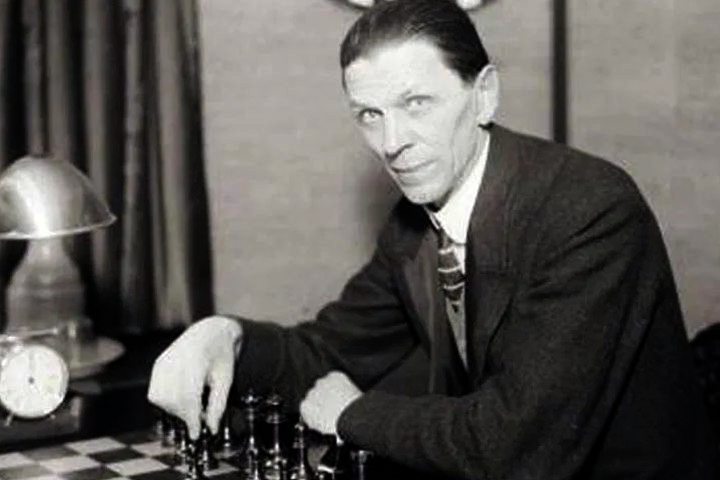


I like the Maroczy structure from White's perspective. White's e4 and c4 pawns secure him a nice spatial advantage, and the burden of proof is on Black. To get equal chances, he needs to play actively, trying to create strong counterplay. After Black's timid play, White is often almost automatically better.
Unfortunately, I am a 1.d4 player, and therefore I never had a chance to get this structure in my own games.
However, I have spent many hours with my pupils analysing different aspects of this structure. And after some time, I discovered one inconspicuous hero. A piece that often decides the outcome of the opening.
Let me introduce you to this unsung hero, the c3-knight. Very often the destiny of this piece foretells the overall result of the opening phase of the game.
Let us have a look at a few examples.
***
In the first one, Bacrot has shown brilliant positional understanding.
Bacrot-Tiviakov, Wijk aan Zee 2006, White to move:
Optically, White is doing very well. All his pieces are nicely centralised. But how to proceed? Most of my pupils try to push 18.c5, but after 18…bxc5 19.bxc5 Bxd5 20.Rxd5 Rfc8 Black seems to hold, E.g. 21.Rcd1 Qe6 and the e4-pawn is also weak.
Bacrot chose a different (and much deeper) plan. He understood that his advantage is based on the strong d5-knight and asked himself: “What should I do to discourage Black from exchanging it?”
And he played 18.b5!. Now after 18…Bxd5 19.cxd5 the white rook enters c6, and Black can barely tolerate it there. However, its exchange would lead to a strong passed pawn on c6.
Therefore, Black tried to organize some counterplay on the kingside: 18…f5!? 19.exf5 Rxf5 But now White transferred his knight to an even better square: 20.Nb4 Bf7 21.Nc6.
Black's queenside pawns are in a grave danger. White plans a2-a4-a5, exchanging one of the pawns and taking the second one. The resulting passed pawn then will decide the game.
White won effortlessly.
Here's the complete game:
***
In the second example, Bent Larsen was contemplating which pieces to keep on the board and which to exchange.
Larsen-Sorensen, Denmark 1989, White to move:
For many club players, 19.Nd5 is an automatic move here. After all, what might possibly be wrong with centralising the knight? However, after 19…Bxd5! Black gets some counterplay because he is having a knight against the “bad bishop”.
Larsen was careful to avoid this scenario. He got rid of his bad bishop first: 19.Bg4! Rcd8 20.Bxd7! Rxd7. Now the jump to d5 is possible without adverse strategical consequences: 21.Nd5 Bxd5 22.Rxd5.
The resulting heavy pieces middlegame is very unpleasant for Black, as his rooks lack both space and activity. White won soon, combining the play on both sides.
Here's the complete game:
***
The importance of the white knight was very well understood by Malakhov in the following example.
Dvoirys-Malakhov, Russian Championship 2003, Black to move:
Black is very active. But how to convert his initiative into something tangible?
Most club players would try to keep their g7-bishop alive, as it is both an attacking and a defensive piece. However, the c3-knight is vital for White. It guards the …b7-b5 break and might jump once to d5.
Therefore, Malakhov played simply 17...Qxc3! 18.Qxc3 Bxc3, neutralizing the strong knight. After 19.Rxc3 fxe4 20.fxe4 b5 it was rather obvious that White's pair of bishops does not compensate for his structural weaknesses.
However, Dvoirys defended actively and well, and was able to hold the game.
***
In the last example, Garry Kasparov will show us how to handle the queenside knight!
Kasparov-Kasimdzhanov, Europe-Asia rapid 2001, White to move:
In this standard position, many club players would again play 14.Nd5, assuming that the knight belongs to the centre. However, that would allow Black to exchange it and equalize. The theoretical line continues 14…Qxd2+ 15.Kxd2 Nxd5 16.cxd5 Bd7 with a fully acceptable play for Black, as his queenside is without weaknesses.
Therefore, white players are trying to find an alternative path for their knight. Some tried to find an advantage after 15.Na4, forcing 15…Qxd2+ 16.Kxd2 Nd7. However, Kasparov had a different maneuver in mind. He played 14.Ne2!?, and after 14…Qxd2+ 15.Kxd2 Nd7 he transferred the knight to the kingside with 16.Nf4. The game continued 16…Nc5 17.Be2 a5 18.h4 with a small edge for White. He is prepared for an active play on the kingside.
Although Kasimdzhanov later equalized, in the end Kasparov won.
Here's the complete game:
***
If you want to master the Maroczy structure from White's perspective, you should consider the fate of your c3-knight. Here are some guidelines that you might find handy over the board.
| Advertising |